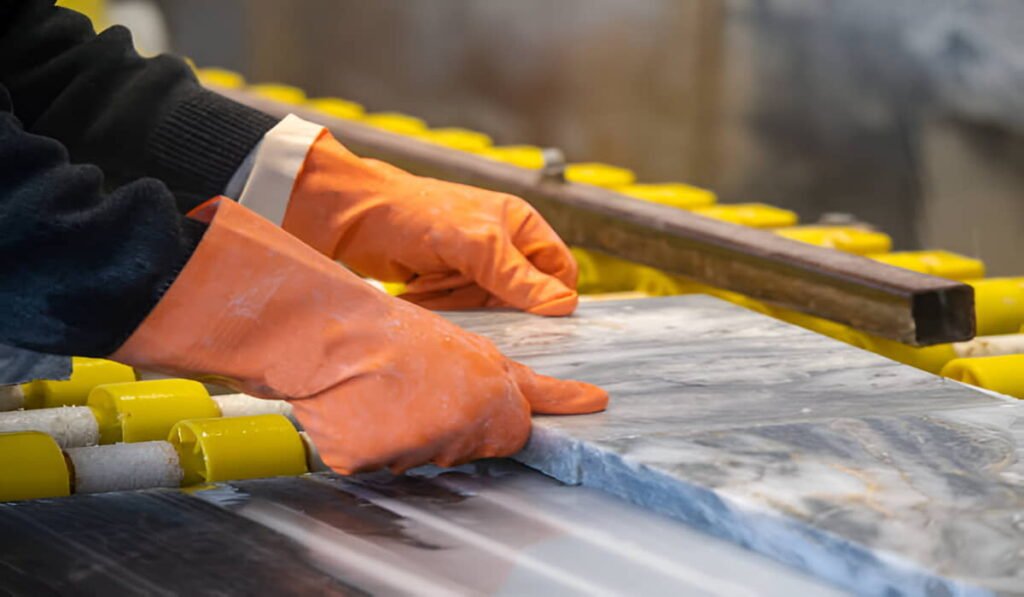Marble gum polishing is a professional technique that uses special rubber-like discs to restore marble shine without water or chemicals. This dry polishing method creates a high-gloss finish while removing light scratches and surface damage. It’s faster and cleaner than traditional wet polishing methods.
This special way of making marble shiny is becoming popular with homeowners and professionals.
Let’s learn why it works so well.
How Gum Polishing Works
Special rubber discs spin on machines to polish marble surfaces. These discs contain tiny diamond particles that smooth out scratches and restore shine.
The process works completely dry, so there’s no messy water or slurry to clean up afterward. This makes it perfect for indoor jobs.
Different disc grades handle various levels of damage. Coarse discs fix deep scratches while fine discs create the final glossy finish.
Why It’s Called “Gum” Polishing
The polishing discs feel soft and flexible like chewing gum. They bend and flex to follow the marble’s natural curves and patterns.
Unlike hard grinding wheels, these rubber discs won’t chip or crack delicate marble edges. They’re gentle but very effective.
The flexible material reaches into grooves and textured areas that rigid tools might miss completely.
Benefits Over Traditional Methods
No water means no muddy mess to clean up during or after polishing. Your floors and furniture stay completely dry.
The process works faster than wet methods because there’s no drying time needed between steps. Most jobs finish in half the time.
Less dust gets created compared to dry grinding methods. The rubber material captures particles instead of throwing them into the air.
What Surfaces Can Be Polished
Marble floors respond beautifully to gum polishing, especially in high-traffic areas that have lost their shine over time.
Countertops and vanities get restored to showroom condition. The method works perfectly on both light and dark marble colors.
Stairs, wall panels, and decorative features can all be polished using smaller handheld versions of the equipment.
The Step-by-Step Process
Cleaning comes first to remove all dirt, grime, and old polish residue. The marble must be completely clean before polishing starts.
Coarse gum discs remove scratches, etching, and surface damage. This step levels the marble and prepares it for finer polishing.
Medium-grade discs smooth the surface and begin developing the shine. Multiple passes create increasingly better results.
Fine polishing discs create the final high-gloss finish. This step brings out marble’s natural beauty and depth.
Equipment Used
Professional machines range from small handheld units to large floor machines. The right size depends on the job requirements.
Diamond-embedded rubber discs come in various grades from 50 grit up to 3000 grit. Each grade serves a specific purpose.
Dust collection systems keep work areas clean when attached to polishing machines. This protects your furniture and belongings.
Time Required
Small areas like bathroom vanities typically take 2-4 hours to complete. This includes all preparation and cleanup time.
Average-sized floors need 6-8 hours for complete restoration. Large spaces might require multiple days depending on damage levels.
Touch-up work on minor scratches can be finished in 30-60 minutes per area. Quick fixes don’t require full refinishing.
Cost Considerations
Professional gum polishing costs less than traditional refinishing because it’s faster and requires fewer materials and cleanup.
DIY equipment rental is possible but requires skill to avoid damage. Mistakes can be expensive to fix professionally.
The investment pays off through restored marble value and eliminated replacement costs. Quality polishing extends marble life significantly.
When Gum Polishing Works Best
Light to medium surface damage responds perfectly to this method. Scratches, dullness, and minor etching disappear completely.
Regular maintenance polishing keeps marble looking new indefinitely. Annual or bi-annual treatments prevent major restoration needs.
High-traffic areas benefit most from gum polishing’s durability. The finish lasts longer than traditional polishing methods.
Limitations to Know
Deep gouges, cracks, or severe etching might need traditional grinding first. Gum polishing can’t fix major structural damage.
Very porous marble types might not achieve the same high gloss as denser stones. Results depend on marble quality and condition.
Color matching on repairs requires traditional methods before gum polishing. This technique focuses on surface finishing rather than repair.
Maintenance After Polishing
Regular cleaning with pH-neutral products preserves the polished finish longer. Avoid acidic cleaners that dull the surface.
Immediate spill cleanup prevents stains and etching that would require re-polishing. Quick action saves money and effort.
Annual touch-up polishing maintains the shine indefinitely. This costs much less than full restoration projects.
Comparing to Other Methods
Wet polishing creates better results on severely damaged marble but makes much more mess and takes longer to complete.
Chemical polishing uses acids and compounds that can be dangerous and environmentally harmful. Gum polishing uses no chemicals.
Hand polishing with compounds works for small areas but can’t match machine results on large surfaces.
Professional vs DIY
Professionals like Dubai Marble Polishing have experience with different marble types and damage levels. They know which disc grades work best for specific problems.
Rental equipment lacks the power and precision of professional machines. Results often disappoint homeowners who try it themselves.
Insurance coverage protects against damage when hiring professionals. DIY mistakes aren’t covered by homeowner’s policies.
Environmental Benefits
No water waste makes gum polishing environmentally friendly. Traditional methods can waste hundreds of gallons per job.
Chemical-free process eliminates toxic runoff that can harm plants and groundwater. This matters for eco-conscious homeowners.
Reduced dust and debris means cleaner air during the polishing process. This benefits people with allergies or breathing problems.
Marble gum polishing offers an excellent way to restore marble surfaces quickly and cleanly. The dry process, combined with professional-grade results, makes it an attractive option for homeowners wanting to refresh their marble without the mess and time of traditional methods.


